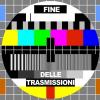Dear Mr. Bach:
Thank you for taking time from your day to read my letter. I assume the subject of music continues to be of interest to you. If I am wrong, please feel free to toss this aside.
First, I would like to thank you for all that you have composed. Your music is of great importance to me. To give just one example, in 1991 my wife and I attended the Christmas Eve Concert at Carnegie Hall. A string orchestra played your Brandenburg Concerto No. 3. Throughout the performance, I was slack-jawed. I had never heard anything like it. I was amazed. Up to that point, I had been writing popular songs as well as some relatively simple pieces for guitar. I had just begun to compose music for orchestral instruments; that has been my principal focus ever since. Your work was and continues to be a prime example of what I might accomplish someday in this pursuit. In addition, your lifelong dedication to your art has served as a model for me. If all existing music were to be removed from the universe except for that of one composer, and I were asked to select the composer, I would select you.
For the past seven years, I have been writing music that is based upon mathematical objects; I call it mathematical music. I have written pieces based on the Tower of Hanoi, a system of billiard balls, pentominoes, a six-sided die, and a dodecahedral die. The last two works are part of a set of pieces I am writing based upon Platonic dice, that is, dice formed from Platonic solids. Also, I have sketched a piece based on a particular game of chess. Last year I wrote a one-act play titled Lines in the Air, which contains a detailed description of my work Platonic Dice: Dodecahedron along with a discussion of some related mathematical and philosophical topics. Currently, I am writing a second one-act play titled The Mathematical Music Hearing in which various composers discuss the notion of using mathematics to create music. I hope to complete this in the coming months.
A few years ago, someone wrote a short article about my music on a news website called Slashdot. The article was titled What Math Actually Sounds Like. The author provided a link to a MIDI file of my work Platonic Dice: Dodecahedron. As you may know, Slashdot readers are invited to post comments regarding the news articles. Almost two hundred readers responded. Generally speaking, the comments were negative. They felt my creation was nothing more than random gibberish. Many questioned whether or not it should be called music. I was somewhat surprised by this. When I listen to the work, it does not sound random at all. Scattered among these comments were a handful of positive remarks. One individual characterized what I had done as "beautiful".
Since then, from time to time I have wondered why it would be the case that certain few people, including myself, would find my mathematical music to be both interesting and beautiful, while others, in fact the majority, would consider it to be incoherent noise. I suspect you may have experienced the same phenomenon. While there are many people who, like me, consider your music to be extremely interesting, I believe there are even more people who feel it is boring. I would say the same about most of what is called twelve-tone music.
Of all your works, those that I find most interesting are the highly contrapuntal pieces. I especially enjoy your fugues. More generally, I would say I prefer contrapuntal music over all other styles. Why might this be the case? Why would I be so interested in such music?
Recently, I formulated a hypothesis regarding this. I believe my interest in contrapuntal music stems from the fact that I have an extraordinary ability for spatial reasoning.
As I mentioned in my play Lines in the Air, I see lines in the air. That is, while my mind is idling, I construct and visualize imaginary lines within the room that I am sitting. The lines connect objects in the room. They run from the corners of a face of one object to corresponding corners of a face of a neighboring object. The lines form box-like tubes that run from one object to the next. I retrace these lines repeatedly, even while I am talking to someone who is in the room. It is an ongoing background process that my mind does automatically and almost subconsciously. It is a form of play.
In seventh grade everyone in our school was required to take a battery of standardized tests. Among these was an IQ test that included spatial reasoning tasks. One particular type of question that I remember involved mentally folding a two-dimensional representation of a three-dimensional polyhedron. Here, one is asked to identify the resulting three-dimensional polyhedron from a set of candidates. Though I cannot say for sure, I suspect that another series of questions required one to mentally rotate and flip a given polygon to find a matching polygon from a set of candidates. I scored extremely well on the questions that involved spatial reasoning. Because of my ability in this area, I was one of about 50 students in 500 who were selected to skip eighth-grade math and study ninth-grade algebra in eighth grade. And I was one of about five or ten students who were selected to study computer programming in ninth grade. When I was a senior in high school, I was told that my score on the IQ test in seventh grade had been 145. My verbal skills were not too strong at that time. So I suspect that in order for my IQ to have been that high, my score on the spatial reasoning component of the test must have been quite exceptional.
In your contrapuntal music, a subject or theme is transformed in various ways. For example it might be played backwards; we call that a retrograde or cancrizans version of the subject. It might be flipped over about a given pitch; we call that an inversion. You might also have a retrograde inversion whereby the subject is inverted and played backwards. As I am sure you know, Arnold Schoenberg employed retrograde and inversion as a basis for his "method of composing with twelve tones". I too have used these transformations in my recent compositions.
By using retrograde or inversion, one generates a mirror image of a given subject. One of the elements of spatial reasoning is the ability to recognize the relationship between mirrored versions of something.
I believe that when a person who possesses a strong ability for spatial reasoning listens to music that employs transformations such as retrograde and inversion, they use this ability to recognize that the various transformed versions of a given subject are related. I believe that, consequently, they hear such music as being cohesive and interesting. Generally speaking, I suspect that those who are lacking in this ability will tend to hear the same music as random, incoherent and boring. This is not to say that all people who are weak at spatial reasoning will consider the music to be uninteresting. It is possible some such individuals will find it to be interesting on some other level. For example, one might be interested in your music because you have written it "for the glory of God", or because you are a German composer, or because you wrote your music during a particular period in history.
I think your highly contrapuntal music, much of twelve-tone music, and my mathematical music are all examples of what I refer to as visual-spatial music. By visual-spatial music, I mean music that is intended to be of interest to individuals who are exceptionally gifted at spatial reasoning. I have borrowed the term visual-spatial from psychology. I am not sure who coined this term; it is associated with Howard Gardner's theory of multiple intelligences. Technically speaking, in his book Frames of Mind, Gardner uses the term spatial in place of visual-spatial because "it seems preferable to speak of spatial intelligence without linking it inextricably to any particular sensory modality". I agree. Here, I have included the prefix visual only because the term spatial music currently refers to a different type of music for which the spatial position of sound sources plays a central role.
In composing visual-spatial music, we might aim to satisfy the taste of an imaginary ideal listener with an unlimited power for spatial reasoning, or we might write for some unknown human being who is the most gifted at spatial reasoning at the current time. To this end, we could employ transformations that generate mirror images. Beyond that, we could develop new resources for composition by employing additional types of transformations or concepts that are related to spatial reasoning. We might find such ideas among the questions in IQ tests. Or, they might be derived from the puzzles and games of recreational mathematics. Investigations of other games such as chess might be fruitful.
To some extent, I have done this in my mathematical music. For example, the sequence of pitches in a given Platonic Dice piece is such that a person with sufficient ability for spatial reasoning might, by listening, be able to recognize that the piece is based upon a particular Platonic solid. This draws on the same ability that one uses in the IQ-test question I discussed earlier for which one mentally folds a planar representation of a polyhedron to obtain its three-dimensional form. For such an individual, perhaps the relationships between the thematic elements of the music are puzzling enough to be nonobvious, but not so difficult to be beyond their ability for spatial reasoning. In short, for them it is interesting.
Again, thank you for allowing me to use your valuable time. I hope what I have written here will be of some interest and use to you.
Sincerely,
John P. Greschak
















